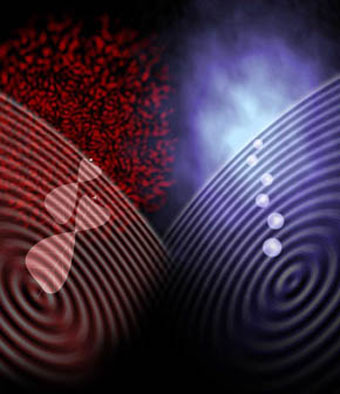 Scientists have demonstrated for the first time that atoms can be guided in a laser beam and possess the same properties as light guided in an optical communications fibre.
Scientists have demonstrated for the first time that atoms can be guided in a laser beam and possess the same properties as light guided in an optical communications fibre.
Apr 25th, 2011
Read more
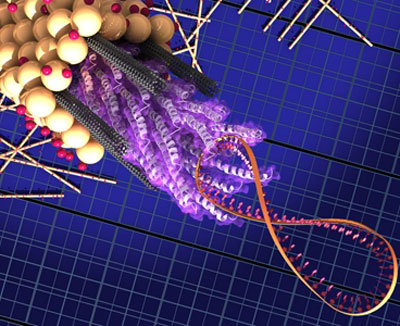 MIT researchers use genetically modified virus to produce structures that improve solar-cell efficiency by nearly one-third.
MIT researchers use genetically modified virus to produce structures that improve solar-cell efficiency by nearly one-third.
Apr 25th, 2011
Read more
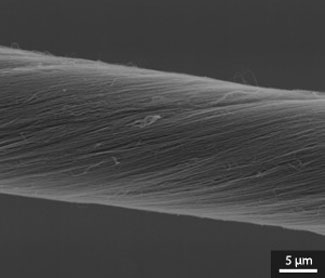 Bundles of carbon nanotubes have very high surface area, which makes them of potentially great benefit for use in solar cells. Researchers from Fudan University in China have now devised a method to fabricate flexible and weavable solar cells using long fibers spun from CNTs.
Bundles of carbon nanotubes have very high surface area, which makes them of potentially great benefit for use in solar cells. Researchers from Fudan University in China have now devised a method to fabricate flexible and weavable solar cells using long fibers spun from CNTs.
Apr 25th, 2011
Read more
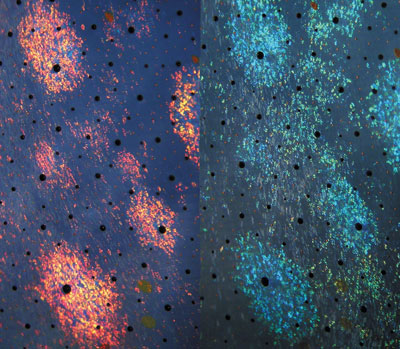 Camouflage expert Roger Hanlon of the Marine Biological Laboratory (MBL) is co-recipient of a $6 million grant from the Office of Naval Research to study and ultimately emulate the exquisite ability of some marine animals to instantly change their skin color and pattern to blend into their environment.
Camouflage expert Roger Hanlon of the Marine Biological Laboratory (MBL) is co-recipient of a $6 million grant from the Office of Naval Research to study and ultimately emulate the exquisite ability of some marine animals to instantly change their skin color and pattern to blend into their environment.
Apr 22nd, 2011
Read more
The mystery behind a detection method that can sense the presence of individual molecules - useful for researchers analyzing artwork and anthrax alike - has been unraveled by scientists with the Lawrence Berkeley National Laboratory.
Apr 22nd, 2011
Read more
UCLA researchers have redefined the concept of a microscope by removing the lens to create a system that is small enough to fit in the palm of a hand but powerful enough to create three-dimensional tomographic images of miniscule samples.
Apr 22nd, 2011
Read more
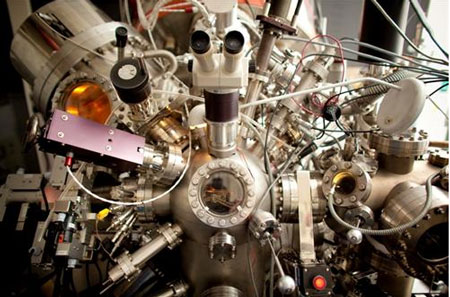 The scientist who developed the world's most sensitive spectrometer for identifying atoms on a material's surface came to Lehigh recently to give a talk at the only U.S. lab that is equipped with his cutting-edge instrument.
The scientist who developed the world's most sensitive spectrometer for identifying atoms on a material's surface came to Lehigh recently to give a talk at the only U.S. lab that is equipped with his cutting-edge instrument.
Apr 22nd, 2011
Read more
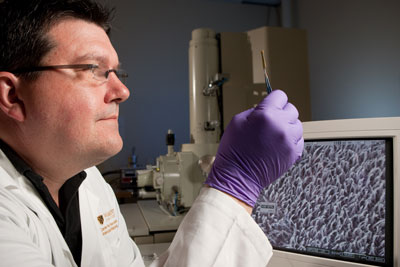 A new polymer-based solar-thermal device is the first to generate power from both heat and visible sunlight - an advance that could shave the cost of heating a home by as much as 40 percent.
A new polymer-based solar-thermal device is the first to generate power from both heat and visible sunlight - an advance that could shave the cost of heating a home by as much as 40 percent.
Apr 22nd, 2011
Read more
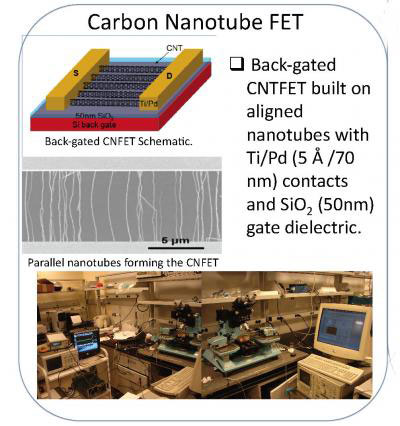 Devices might be used in brain prostheses - or combined into massive network of synthetic neurons to create a synthetic brain
Devices might be used in brain prostheses - or combined into massive network of synthetic neurons to create a synthetic brain
Apr 21st, 2011
Read more
Los Alamos National Laboratory scientists have developed a way to avoid the use of expensive platinum in hydrogen fuel cells, the environmentally friendly devices that might replace current power sources in everything from personal data devices to automobiles.
Apr 21st, 2011
Read more
A collaboration between the Whitesides Group at Harvard University and CSM Instruments has culminated in an important advance in lithography of different materials at the nanoscale. The motivation for this development was the ability to produce unique lithographical patterns of different shapes and sizes for use in research applications (e.g. lab-on-a-chip) where conventional techniques such as electron-beam lithography (EBL) and photolithography cannot be used.
Apr 21st, 2011
Read more
The tools of nanobiotechnology have wide-ranging commercial impact on fields that include pharma, medtech, textiles, agriculture, consumer products and many more. There are many hotbeds of nanobiotech innovation, and North Carolina has emerged as a leader in nanobiotech research, development and commercialization.
Apr 21st, 2011
Read more
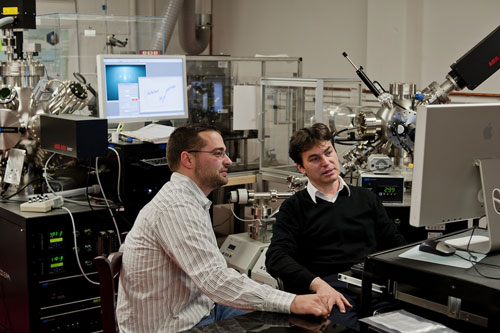 A University of Arkansas physicist has received the largest award granted to an individual researcher from the Army Research Laboratory to search for a novel class of nanomaterials with rationally designed properties.
A University of Arkansas physicist has received the largest award granted to an individual researcher from the Army Research Laboratory to search for a novel class of nanomaterials with rationally designed properties.
Apr 21st, 2011
Read more
An alliance of top researchers at the University of California, Berkeley, has formed the UC Berkeley Synthetic Biology Institute (SBI), advancing efforts to engineer cells and biological systems in ways that promise to transform technology in health and medicine, energy, the environment, new materials, and a host of other critical arenas.
Apr 21st, 2011
Read more
Nanotechnology researchers have known for years that RNA, the cousin of DNA, is a promising tool for nanotherapy, in which therapeutic agents can be delivered inside the body via nanoparticles. But the difficulties of producing long-lasting, therapeutic RNA that remains stable and non-toxic while entering targeted cells have posed challenges for their progress. Now, researchers detail successful methods of producing large RNA nanoparticles and testing their safety in the delivery of therapeutics to targeted cells.
Apr 21st, 2011
Read more
The Food Standards Agency (FSA) in the UK has published a report of consumers' views on the use of nanotechnology in food and food packaging. The focus group research, which asked participants about their views on nanotechnology in late 2010 and early 2011, was carried out as part of the FSA's programme of work on nanotechnology.
Apr 21st, 2011
Read more
 Scientists have demonstrated for the first time that atoms can be guided in a laser beam and possess the same properties as light guided in an optical communications fibre.
Scientists have demonstrated for the first time that atoms can be guided in a laser beam and possess the same properties as light guided in an optical communications fibre.







 Subscribe to our Nanotechnology News feed
Subscribe to our Nanotechnology News feed